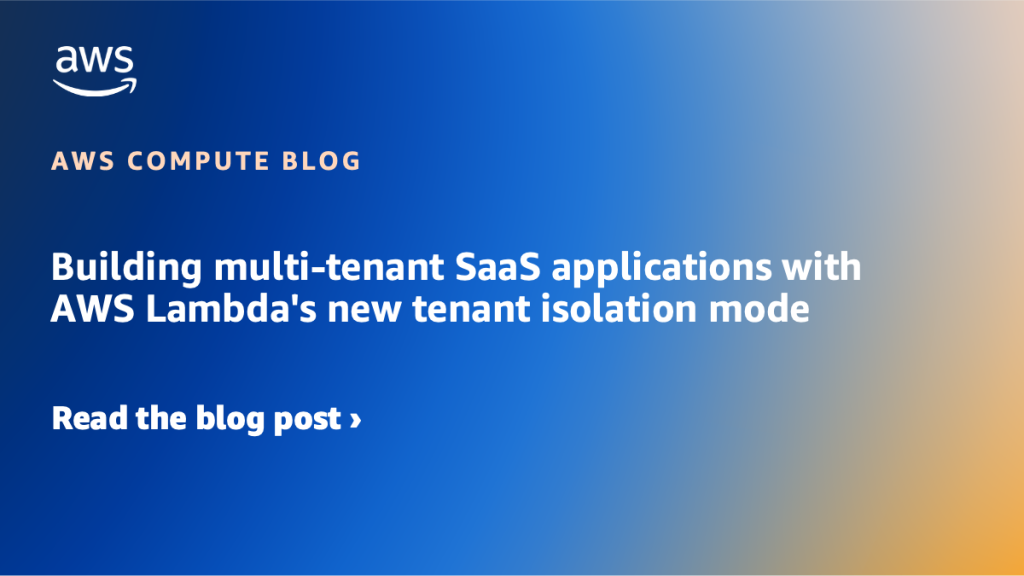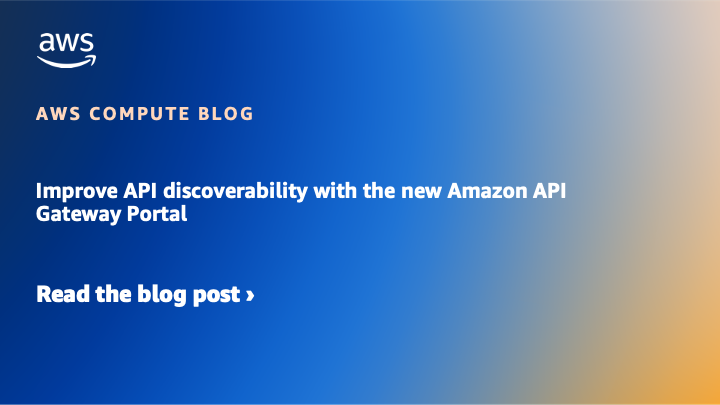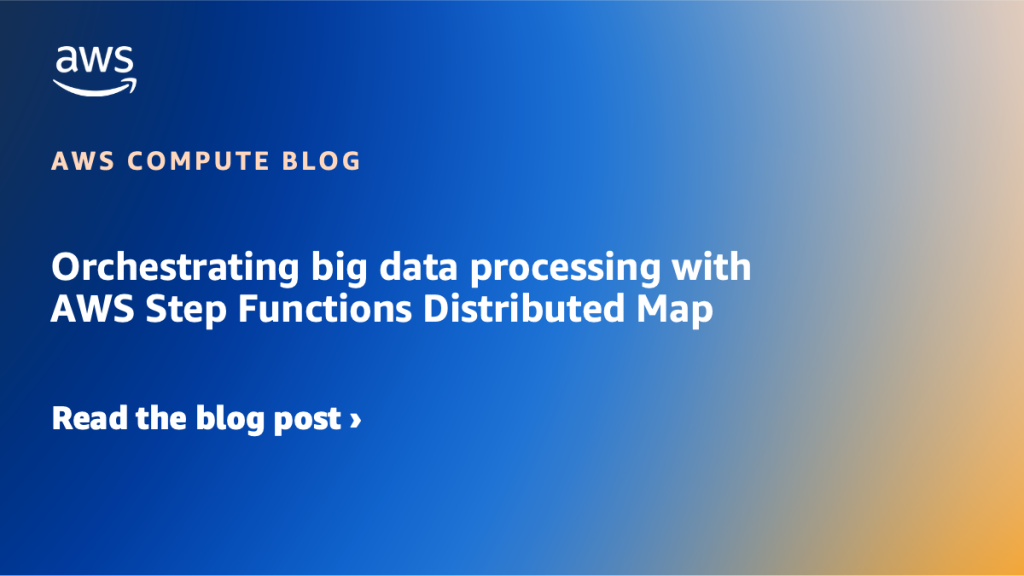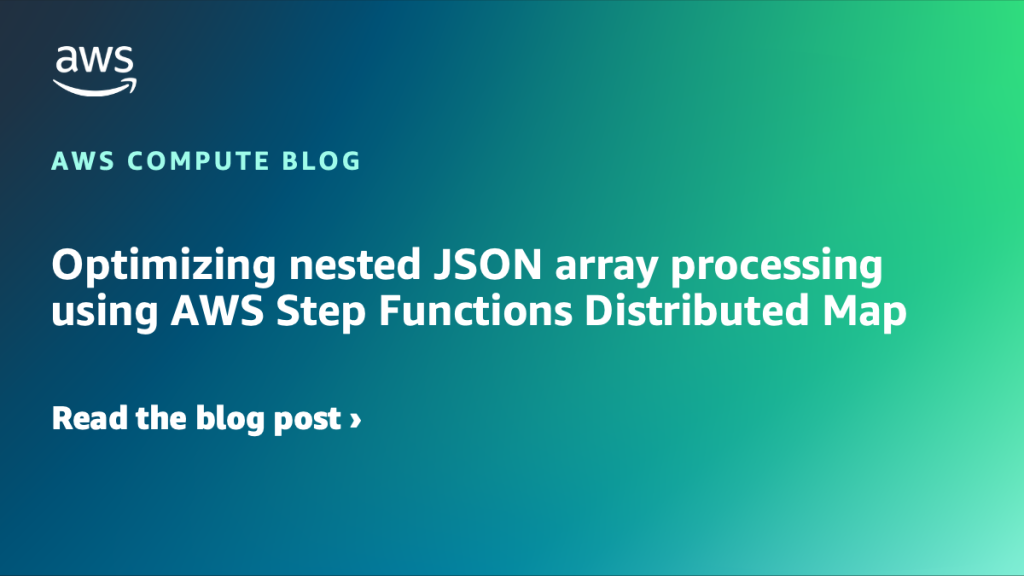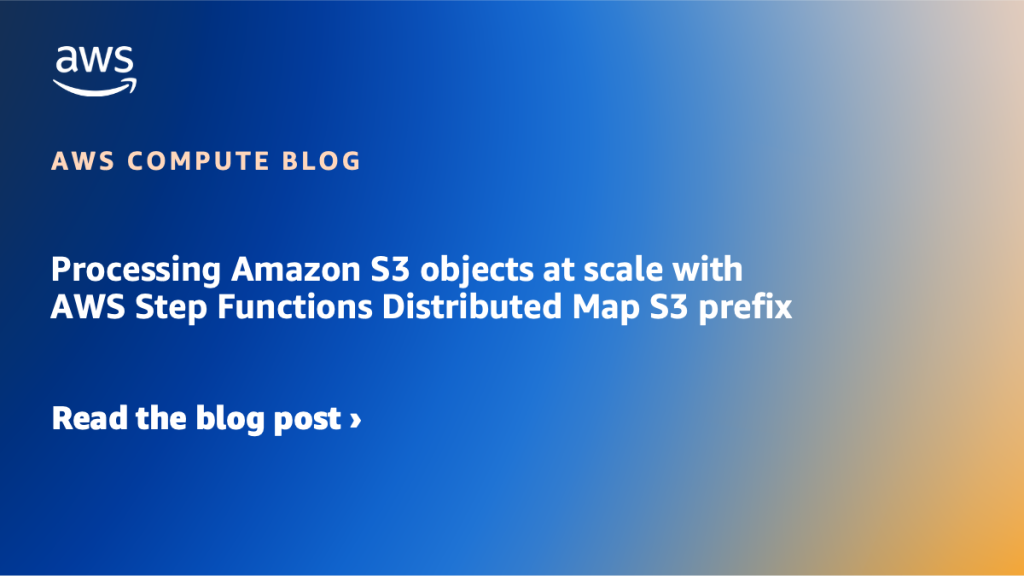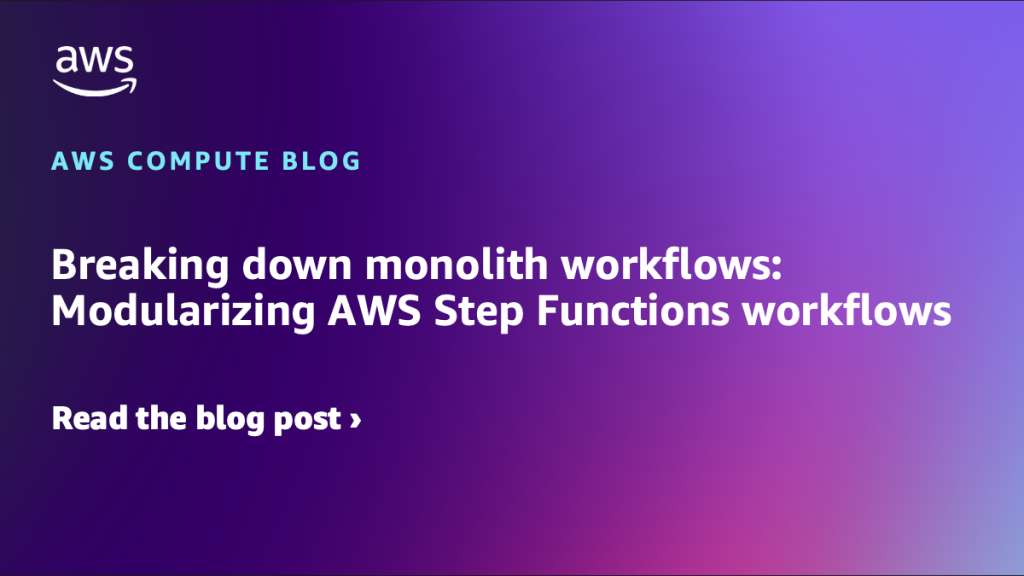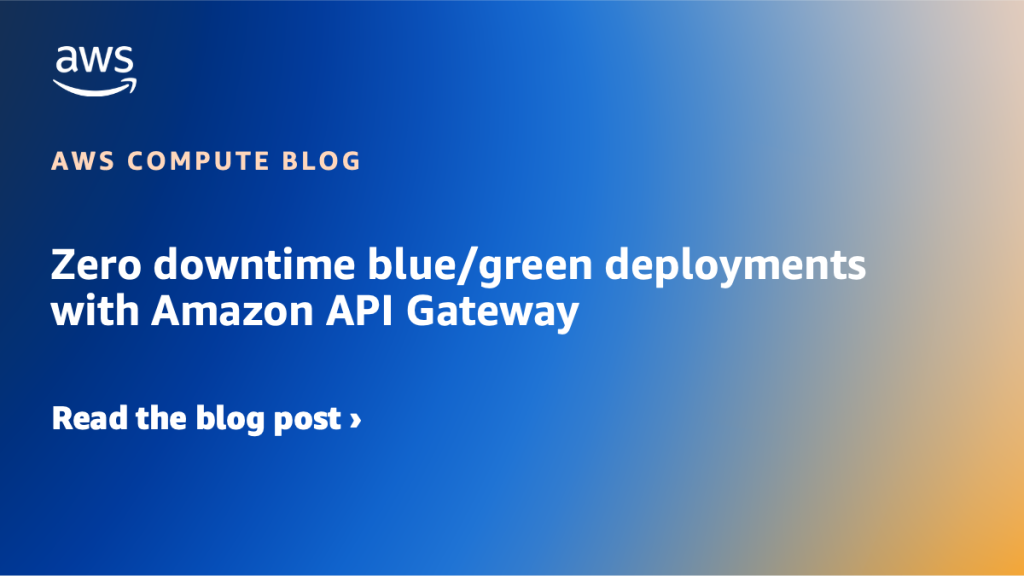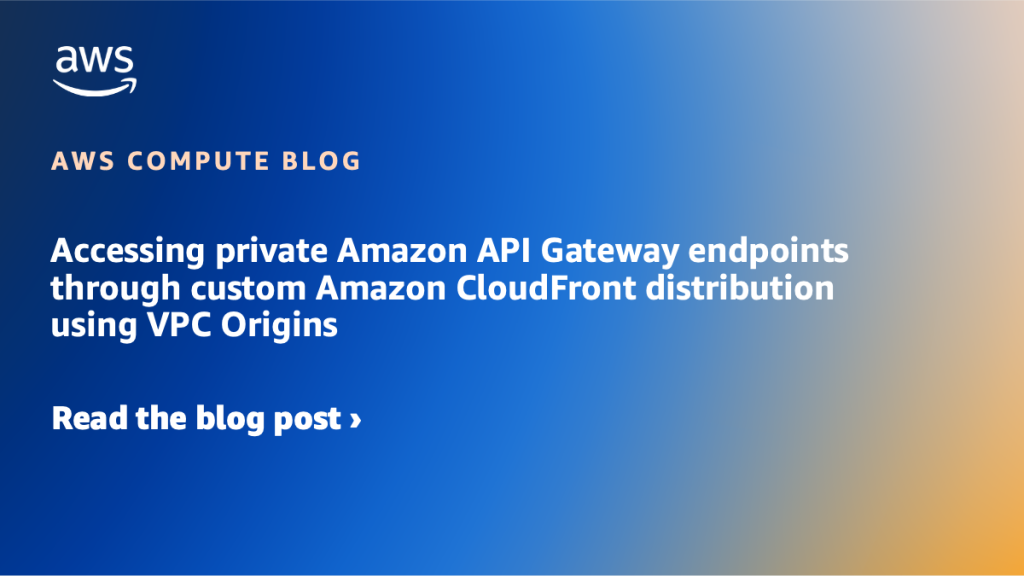AWS Compute Blog
Category: Application Services
Building multi-tenant SaaS applications with AWS Lambda’s new tenant isolation mode
Today, AWS is announcing tenant isolation for AWS Lambda, enabling you to process function invocations in separate execution environments for each end-user or tenant invoking your Lambda function. This capability simplifies building secure multi-tenant SaaS applications by managing tenant-level compute environment isolation and request routing, allowing you to focus on core business logic rather than implementing tenant-aware compute environment isolation.
Improve API discoverability with the new Amazon API Gateway Portal
In this post, we will show how you can use the new portal feature to create customizable portals with enhanced security features in minutes, with APIs from multiple accounts, without managing any infrastructure.
Handle unpredictable processing times with operational consistency when integrating asynchronous AWS services with an AWS Step Functions state machine
In this post, we explore using AWS Step Function state machine with asynchronous AWS services, look at some scenarios where the processing time can be unpredictable, explain when traditional solutions such as polling (periodically check) fall short, and demonstrate how to implement a generalized callback pattern to handle asynchronous operations into a more manageable synchronous flow.
Orchestrating big data processing with AWS Step Functions Distributed Map
In this post, you’ll learn how to use AWS Step Functions Distributed Map to process Amazon Athena data manifest and Parquet files through a step-by-step demonstration.
Optimizing nested JSON array processing using AWS Step Functions Distributed Map
In this post, we explore how to optimize processing array data embedded within complex JSON structures using AWS Step Functions Distributed Map. You’ll learn how to use ItemsPointer to reduce the complexity of your state machine definitions, create more flexible workflow designs, and streamline your data processing pipelines—all without writing additional transformation code or AWS Lambda functions.
Processing Amazon S3 objects at scale with AWS Step Functions Distributed Map S3 prefix
In this post, you’ll learn how to process Amazon S3 objects at scale with the new AWS Step Functions Distributed Map S3 prefix and transformation capabilities.
Breaking down monolith workflows: Modularizing AWS Step Functions workflows
You can use AWS Step Functions to orchestrate complex business problems. However, as workflows grow and evolve, you can find yourself grappling with monolithic state machines that become increasingly difficult to maintain and update. In this post, we show you strategies for decomposing large Step Functions workflows into modular, maintainable components.
Zero downtime blue/green deployments with Amazon API Gateway
In this post, you learn how to implement blue/green deployments by using Amazon API Gateway for your APIs. For this post, we use AWS Lambda functions on the backend. However, you can follow the same strategy for other backend implementations of the APIs. All the required infrastructure is deployed by using AWS Serverless Application Model (AWS SAM).
How to export to Amazon S3 Tables by using AWS Step Functions Distributed Map
In this post, we show how to use Step Functions Distributed Map to process Amazon S3 objects and export results to Amazon S3 Tables, creating a scalable and maintainable data processing pipeline.
Accessing private Amazon API Gateway endpoints through custom Amazon CloudFront distribution using VPC Origins
This post demonstrates how you can connect CloudFront with a Private REST API in Amazon REST API Gateway using a VPC origin.
